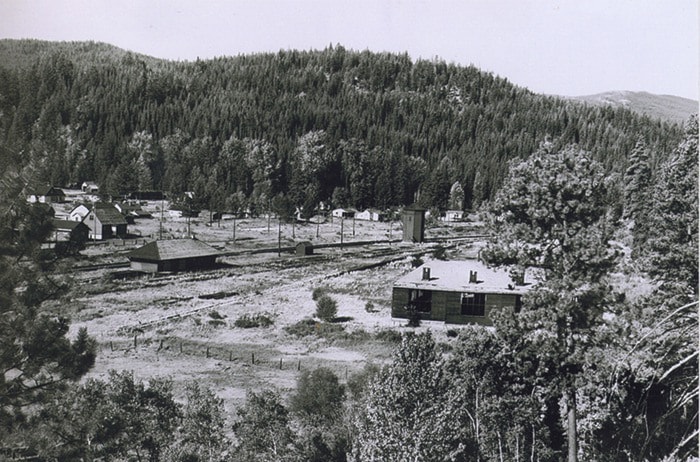The years of steam as a source of railway power have passed many years ago, although not beyond memory or experience of many people in B.C. and Quesnel.
James Logie of Quesnel worked on the Kettle Valley Railway, from Brookmere, as wiper and once as a fireman, driving the relief train to reach an engine derailed in the Coquihalla section of the track.
The years have passed, but the memories of those days and that era are fondly and proudly remembered.
The K.V.R. is now history; it was finally shut down, after 50 years of struggle, in 1989, although many sections died in the 1970s. In 1973, the Canadian Broadcasting Corporation filmed “The National Dream”, telling the story of Pierre Berton’s books using an old section of the railway.
In 1978, on Quesnel’s 50th anniversary, the Royal Hudson steam train took Quesnel pioneers to the Australian Ranch for a tribute picnic – a signal honour.
What was it like to start and run a steam locomotive of 150 tons? Assuming the tender was full of coal, water and sand and all moving parts were lubricated and the crew had their lunches and had their train orders for the day.
With a cold engine start, oil rags, called waste, were put in the huge firebox by the fireman, along with kindling wood and large pieces of coal and set on fire.
It took some time, one hour or more, for the fire to really get going; then a fan would be started with a small amount of steam pressure, to blow the flames along.
If the cylinders were frozen, hand torches thawed them and the connecting lines until heat and steam on the mountain of metal was heated enough to roll.
Coal was shovelled in and carefully spread around as the fire heated the steam pipes and the steam pressure rose, all watched by the engineer – the man responsible for the engine’s operations.
The engineer had to read the train orders before leaving the yard, which described where, when and what the make-up of the train was; i.e., how many cars of lumber, mixed goods, settlers’ effects, fruit, cattle and so on.
The wiper (the lowest job in the system) cleaned, oiled and adjusted everything (closed car doors) to be ready for the trip.
The fireman kept steam up in the boiler by shovelling tons of coal with a long handled shovel as the engineer dictated.
The engineer of a mixed freight controlled the train, kept it moving, up grade and down grade (no runaways.) He knew the intricacies of the track: where you needed to speed up to climb a hill or brake if coming down. Sand could be spread on the rails if needed to give traction between the steel on steel.
The engine backed up so the slack in each coupling was taken up, then it rushed ahead building up power to overcome the inertia of up to 20 cars.
As the train speeded up, 15 – 20 mph was maximum, the engineer had to watch every piece of the track, as each had its own idiosyncrasy. Heavy rains, heavy snowfalls, stray animals, damaged snow sheds, fallen trees and rocks were a constant concern as any change in the track condition could spell disaster.
Some shifts for the crew were 24 hours long, fighting Mother Nature all the way.
Most trains had a crew of seven, depending on whether it was a passenger, mixed or freight configuration.
On the CPR in 1926, a 10-hour shift earned $79 per month on a 30-day a month job – no holiday pay.
The KVR pay scale was: engineer or conductor, 12 cents per mile; fireman or brakeman, 10 cents per mile; and wipers got 79 cents per hour.
No one got rich in those depression years but a job was a job. Oil for fuel was a huge boon as a valve changed the amount of oil going into the fire. Diesel power came in the 1950s and the fireman’s job was eliminated.
You can almost hear the whistle of the train if you drive to Brookmere from Merritt. Only the water tank remains now at a site where there once was a four-stall roundhouse, a town and lots of bustle as crews changed.
Andy Motherwell is an amateur historian and regular Observer columnist.
